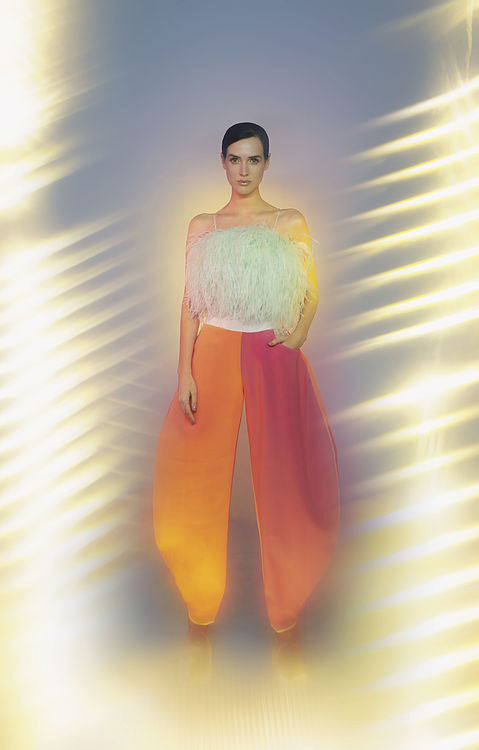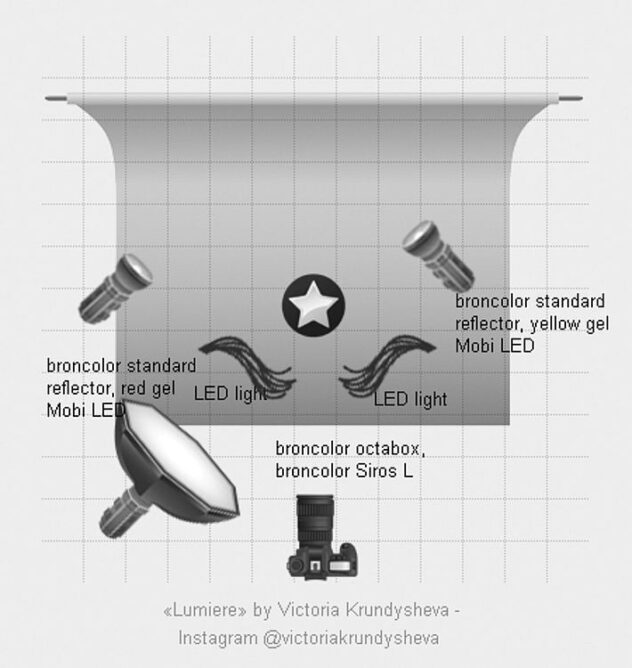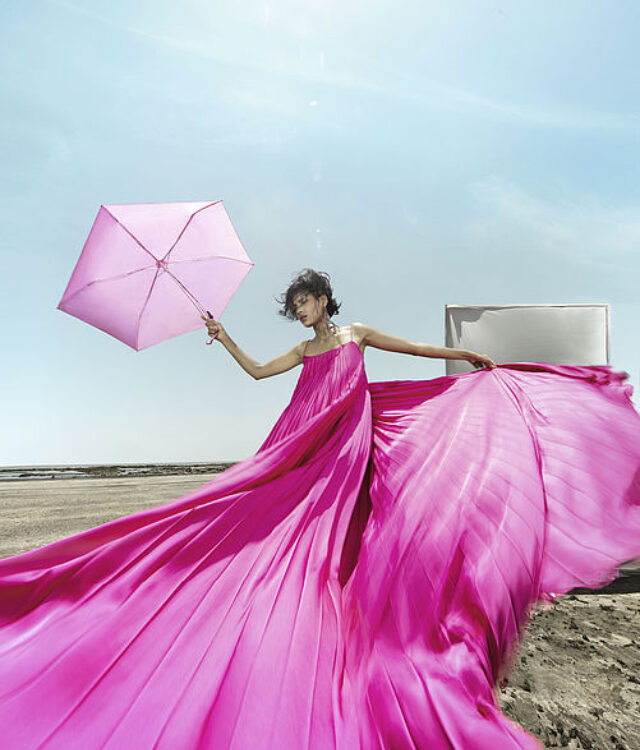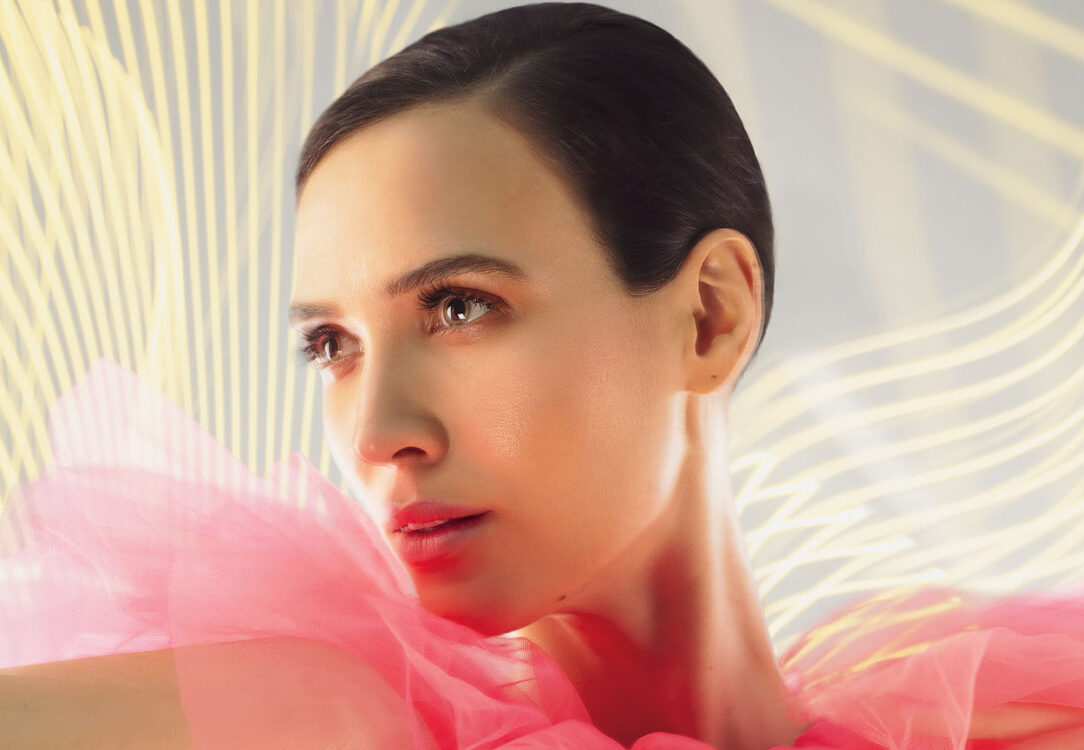
For me, one of the most exciting ways to work with light is mixing flash with continuous lighting as it requires a very good technical skill and allows for various creative expressions. I have worked with mixed lighting a lot before, but this time I decided to do something even more unusual and picked light painting. With light painting I get unlimited patterns, textures and color variations. I consider it a creative gift for any photographer.
«Lumiere» is a project that is all about lighting. For this, I wanted to vary my lighting setups to convey moods and establish a style while preserving a feeling of scale and grandeur. The style and moodboard was leaning towards a fusion of futuristic, avantgarde and luxury. The color palette for this photoshoot was based around pastels, whites and blacks with hints of yellow and gold.
When working with mixed lighting, shutter speed usually comes to the centre of the matter. It needs to be slow enough to allow continuous light to appear in the frame. The main principle in this method, is to keep the parts of the subject that you want to be sharp in focus and illuminated by a flash and those that you want to add motion to by a continuous light.
However, light painting adds an additional challenge to your photoshoot. If you want trails around or over your model, you will have continuous light and flash competing each other. While illuminated by the flash, the subject will be clear. The continuous light over it will however create a duplicate of parts of that subject which may result in overlaps and mess up the clarity. To ensure that the clear parts stay sharp, the model need to stay very still and the camera should be mounted on a tripod. This method calls for more precision from both model and photographer.
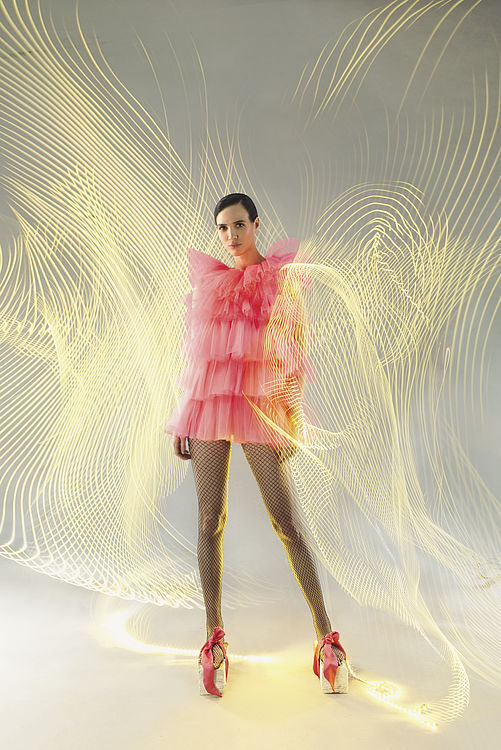
Another challenge is to allow enough time for the pattern to be created. In my case, I tackled this by firing flash manually after approximately 1 second within my 2-4 seconds shutter speed. Essentially, I will first press the camera button, then my assistants will start drawing the pattern and after 1 second I will fire the flash manually. In my experience, this creates much better and cleaner results when using strobes together with LEDs.
For my first setup, I have placed two broncolor Stripboxes with a broncolor MobiLED on both sides of my model. The room had to be completely dark for no extra ambient light to leak in. I kept the modelling lights of for my strobes off (two broncolor Unilites on a Scoro 3200), so that the only continuous light will come from the LEDs.
To give additional highlights, I placed a broncolor Siros 800L with a broncolor Softbox below my model and directed it upwards. The warm temperature of the LED light also worked as a fill, while the two Stripboxes set on the exact same intensity have provided a flattering rim on my model's face.
For some shots I kept the Siros 800L with a standard reflector directed at the background.
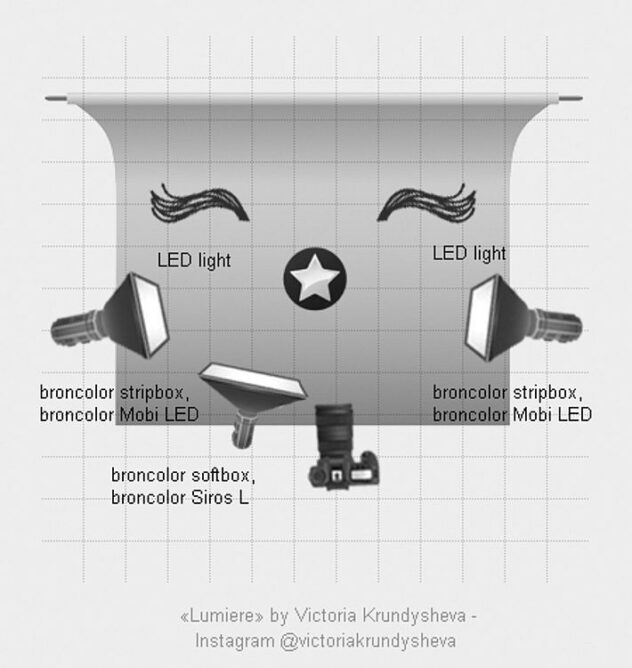
On the second setup, I had colder tones and I wanted more softness in the frame. Therefore, I kept my MobiLED with the Softbox on one side of my model. In addition, I kept the Stripbox on the other side and added blue gel to it.
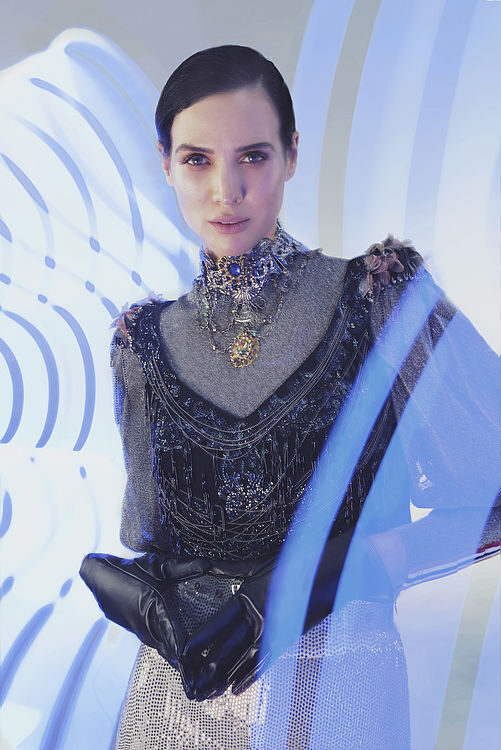
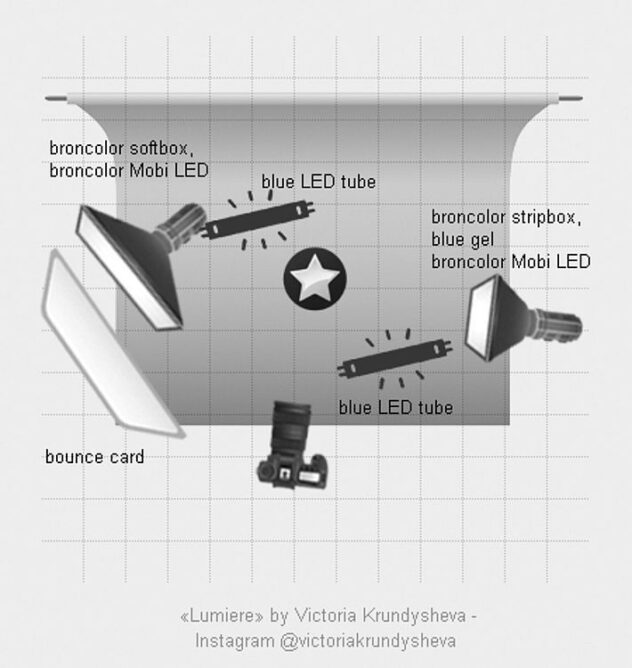
The third setup was even more fun. I wanted to achieve a very high-tech feel in my frame. I plugged my two Unilites to a Scoro 3200 Power Pack and attached standard reflectors and blue gels to them. I mounted them to the top so they would hit directly at the floor creating a separation of the background.
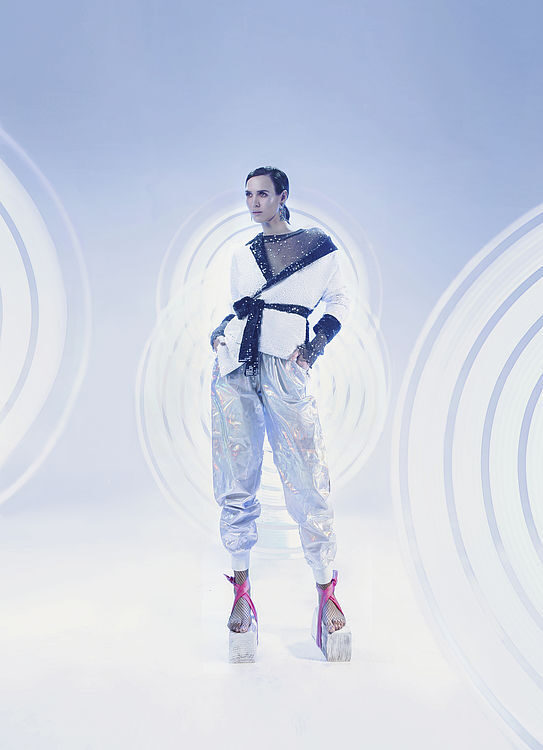
The model was lit by a broncolor Octabox on a Siros 800L from the front-left. Two Stripboxes on MobiLEDs provided additional emphasis from both sides of of the model.
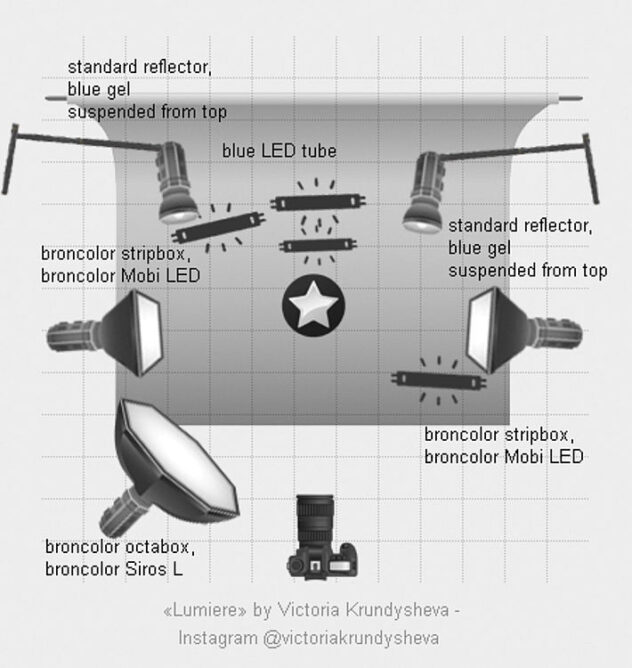
On the fourth set, I had a more hard and dramatic lighting. Both the dark and the bright images were shot on white background. The difference was only having the Siros L800 with the standard reflector on the background either on or off. The model was lit by a MobiLED with a standard reflector suspended above her and a MobiLED with an Octabox as a mild fill on the front-side.
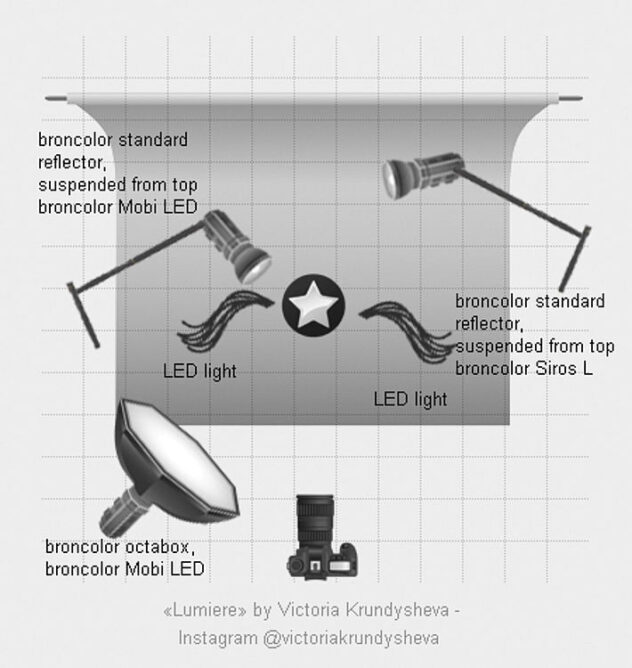
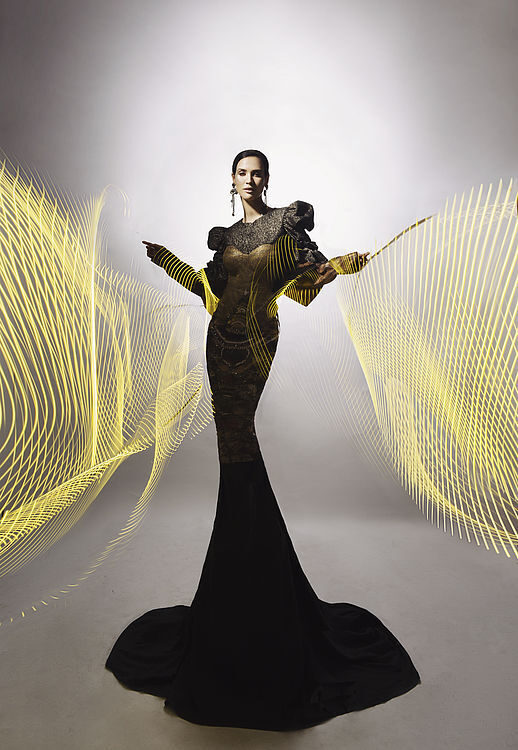
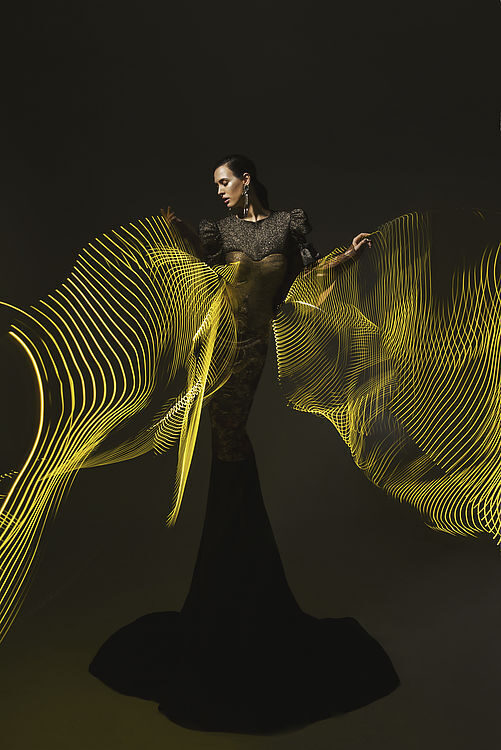
In my next set, I wanted to do one dramatic structured portrait that would highlight the shape of the gorgeous outfit and lines of my model. I also had a Siros 800L with a standard reflector directed at the floor, giving a startling highlight at the bottom of my frame.
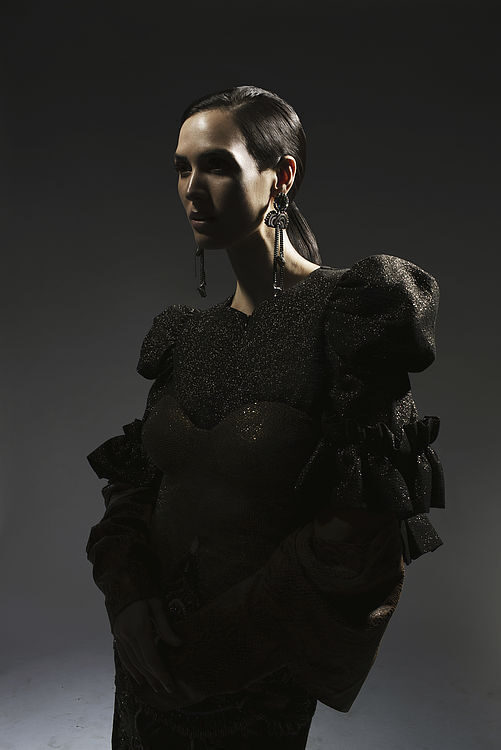
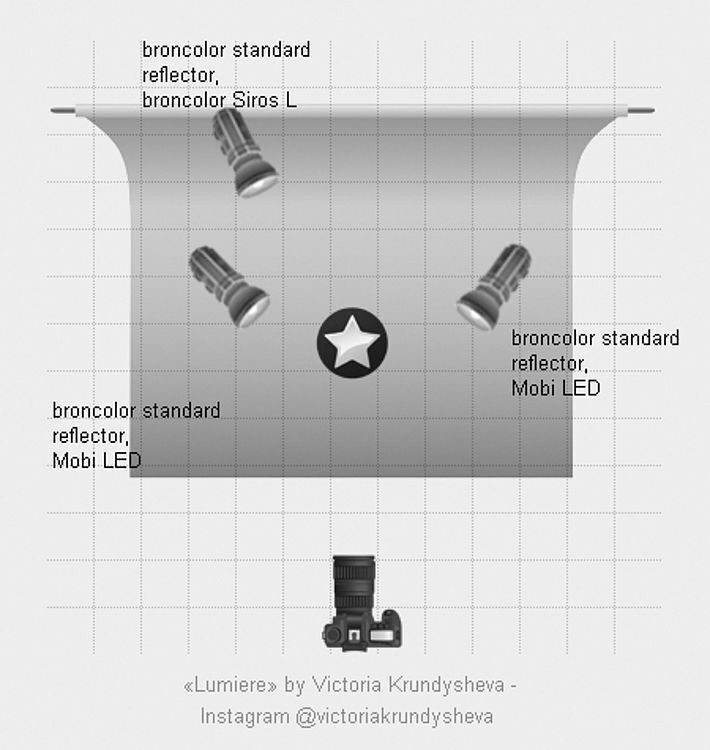
Lastly, I went back to using more pastel tones. Using two MobiLEDs on the background, one with red and one with yellow gel, I created a mild circle-within-a-circle gradient. I kept the Siros 800L with an Octabox on my model and allowed LEDs to "add fire" to my frame, thus closing this exciting experimental fashion shoot.
